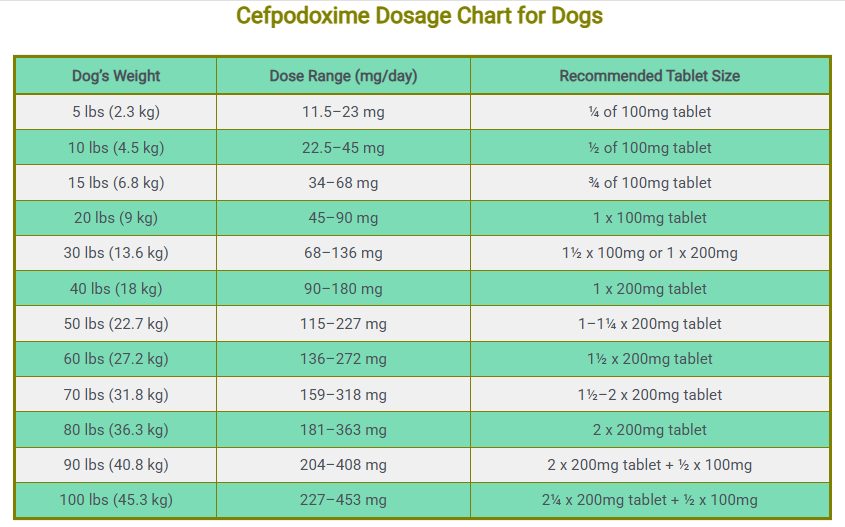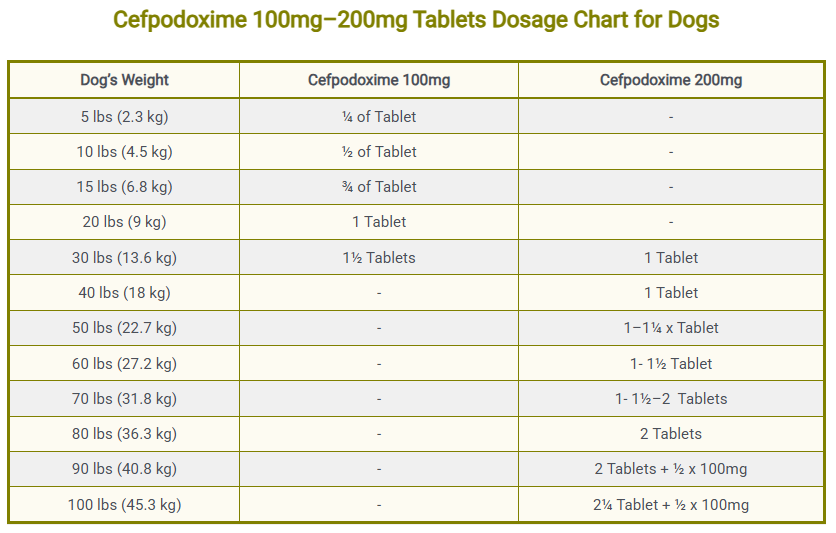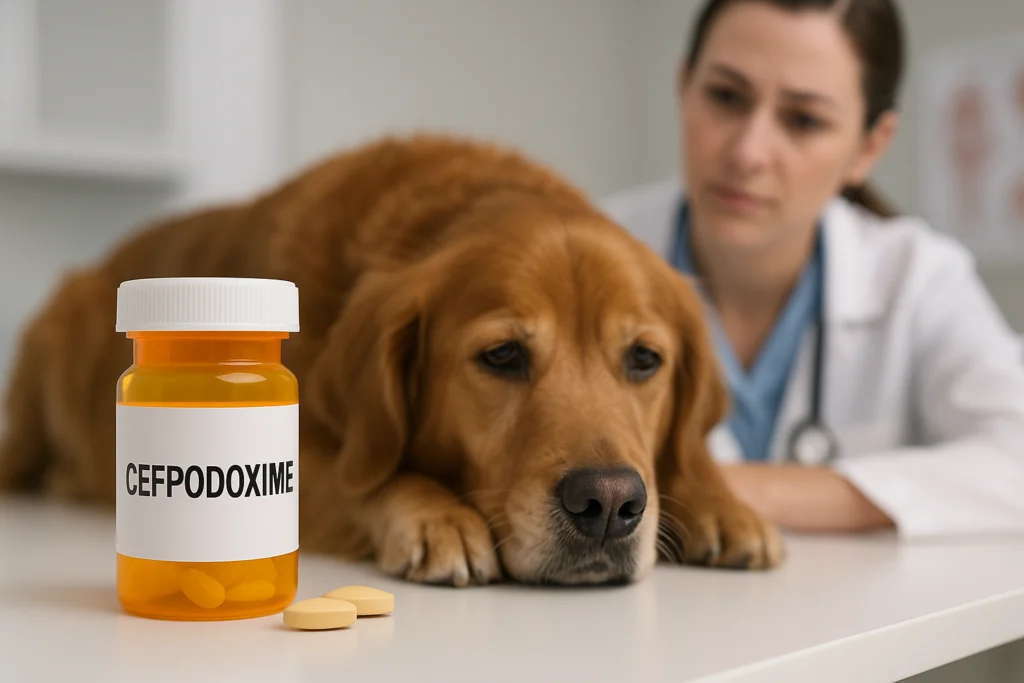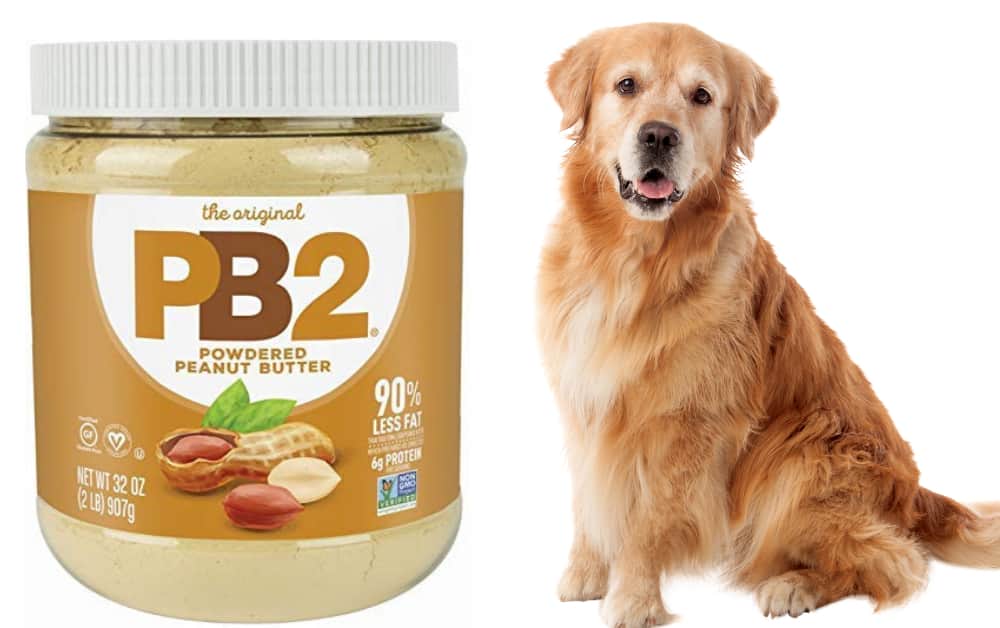Cefpodoxime for dogs is a broad-spectrum cephalosporin antibiotic commonly used in veterinary medicine, especially for dogs. It belongs to the third generation of cephalosporins and is effective against a wide variety of bacterial infections. What makes it especially popular among veterinarians is its once-a-day dosing, which significantly eases the medication routine for pet parents.
This antibiotic comes in different forms, such as tablets and oral suspensions, but the most commonly used in dogs are the 100mg and 200mg tablets. While it’s a prescription-only drug, it’s widely regarded as safe when used under the supervision of a licensed veterinarian. It’s sold under various brand names, including Simplicef and Vantin.
Cefpodoxime is primarily used for skin infections, urinary tract infections, respiratory tract infections, and soft tissue infections. Its ease of administration and wide-spectrum efficiency make it a go-to medication in many veterinary clinics.
Cefpodoxime Dosage For Dogs
The recommended dosage of Cefpodoxime Proxetil for dogs is 5–10 mg/kg (2.3–4.5 mg/lb) of body weight, administered orally once daily. This medication can be given with or without food.
- Duration: Administer once daily for 5–7 days or continue for 2–3 days beyond the cessation of clinical signs, up to a maximum of 28 days.
- Treatment Monitoring: If there is no response to therapy after 3–4 days for acute infections, treatment should not be continued.
- Dosage Considerations: Always consider the severity and type of infection, the susceptibility of the bacteria, and the dog’s overall health. Culture and sensitivity testing of the pathogen are recommended before starting treatment to ensure the most effective therapy.
Cefpodoxime Dosage Chart for Dogs
| Dog’s Weight | Dose Range (mg/day) | Recommended Tablet Size |
|---|---|---|
| 5 lbs (2.3 kg) | 11.5–23 mg | ¼ of 100mg tablet |
| 10 lbs (4.5 kg) | 22.5–45 mg | ½ of 100mg tablet |
| 15 lbs (6.8 kg) | 34–68 mg | ¾ of 100mg tablet |
| 20 lbs (9 kg) | 45–90 mg | 1 x 100mg tablet |
| 30 lbs (13.6 kg) | 68–136 mg | 1½ x 100mg or 1 x 200mg |
| 40 lbs (18 kg) | 90–180 mg | 1 x 200mg tablet |
| 50 lbs (22.7 kg) | 115–227 mg | 1–1¼ x 200mg tablet |
| 60 lbs (27.2 kg) | 136–272 mg | 1½ x 200mg tablet |
| 70 lbs (31.8 kg) | 159–318 mg | 1½–2 x 200mg tablet |
| 80 lbs (36.3 kg) | 181–363 mg | 2 x 200mg tablet |
| 90 lbs (40.8 kg) | 204–408 mg | 2 x 200mg tablet + ½ x 100mg |
| 100 lbs (45.3 kg) | 227–453 mg | 2¼ x 200mg tablet + ½ x 100mg |
Cefpodoxime 100mg–200mg Tablets Dosage Chart for Dogs
| Dog’s Weight | Cefpodoxime 100mg | Cefpodoxime 200mg |
|---|---|---|
| 5 lbs (2.3 kg) | ¼ of Tablet | – |
| 10 lbs (4.5 kg) | ½ of Tablet | – |
| 15 lbs (6.8 kg) | ¾ of Tablet | – |
| 20 lbs (9 kg) | 1 Tablet | – |
| 30 lbs (13.6 kg) | 1½ Tablets | 1 Tablet |
| 40 lbs (18 kg) | – | 1 Tablet |
| 50 lbs (22.7 kg) | – | 1–1¼ x Tablet |
| 60 lbs (27.2 kg) | – | 1- 1½ Tablet |
| 70 lbs (31.8 kg) | – | 1- 1½–2 Tablets |
| 80 lbs (36.3 kg) | – | 2 Tablets |
| 90 lbs (40.8 kg) | – | 2 Tablets + ½ x 100mg |
| 100 lbs (45.3 kg) | – | 2¼ Tablet + ½ x 100mg |
Factors Influencing Cefpodoxime Dosage For Dogs
- Weight: The primary factor. Dosage must be carefully calculated based on body weight.
- Age and breed: Puppies and senior dogs may require dose adjustments. Some breeds have specific sensitivities.
- Kidney and liver function: Since antibiotics are metabolized and excreted by these organs, dogs with impairments might need lower doses.
- Type and severity of infection: More severe or deep-tissue infections may require higher doses or longer treatment durations.
- Other medications: Some drugs may interact with Cefpodoxime, affecting its efficiency or causing adverse effects.
- Overall health: Immune-compromised dogs or those with chronic diseases need a different approach.
Natural Remedies and Supportive Treatments
- Probiotics: Support gut health during antibiotics
- Omega-3: Reduce inflammation
- Antibacterial shampoos: For skin infections
- Herbal immune support (vet-supervised)
Why is Cefpodoxime Prescribed to Dogs?
Veterinarians prescribe Cefpodoxime to treat infections caused by susceptible bacteria. It’s commonly prescribed for:
- Pyoderma (bacterial skin infections)
- Wound infections
- Abscesses
- Cellulitis
- Respiratory tract infections
- Urinary tract infections (UTIs)
One of the reasons for its popularity is the drug’s ability to stay in the system longer, allowing for once-daily dosing. Furthermore, this antibiotic is well-tolerated in most dogs, with minimal gastrointestinal side effects compared to some other antibiotics.
Bacterial Infections Cefpodoxime Targets in Dogs
Cefpodoxime is effective against a range of Gram-positive and Gram-negative bacteria. Some of the most commonly targeted pathogens include:
- Staphylococcus pseudintermedius (often responsible for skin infections)
- Escherichia coli (linked to UTIs and GI infections)
- Proteus mirabilis
- Pasteurella multocida
- Klebsiella pneumoniae
Because it targets both Gram-positive and Gram-negative bacteria, it covers a broad spectrum. It’s still essential to identify the causative organism through culture and sensitivity tests when possible to prevent antibiotic resistance, a growing concern in veterinary medicine.
How Cefpodoxime For Dogs Works
Cefpodoxime works by interfering with the formation of the bacteria’s cell wall. Specifically, it inhibits penicillin-binding proteins (PBPs), which are essential for synthesizing the bacterial cell wall.
This antibiotic is bactericidal, meaning it kills bacteria rather than merely stopping their growth. Importantly, it is ineffective against viral infections or fungal infections, so its use must be limited to bacterial cases.
How to Give Cefpodoxime to Your Dog
Administering medication to a dog can sometimes feel like a wrestling match—especially if your furry friend is picky or suspicious of pills. Luckily, Cefpodoxime tablets are usually palatable, and many dogs accept them when hidden in a treat, pill pocket, or mixed with food.
Effective administration methods:
- Hide in food: Use cheese, peanut butter, or commercial pill pockets
- Direct administration: Place tablet at back of tongue and gently hold mouth closed
- Liquid form: Ask your vet about compounded liquid for easier syringe dosing
- Give with food: Enhances absorption and reduces stomach upset
Important notes:
- Complete the full course to prevent antibiotic resistance
- Store properly (some forms require refrigeration)
Cefpodoxime For Dogs Frequency and Duration of Treatment
Cefpodoxime is typically given once every 24 hours, making it convenient for owners.
Treatment duration depends on:
- Infection type
- Dog’s response
- Underlying conditions
Typical durations:
- 7-14 days for minor skin infections
- Up to 28 days for chronic cases like pyoderma
If you miss a dose:
- Don’t double dose
- Give when remembered unless next dose is due
- Consult your vet if unsure
Signs of positive response:
- Reduced swelling/redness
- Improved appetite
- Normal behavior
Seek immediate vet care for:
- Vomiting/diarrhea
- Lethargy
- Allergic reactions (hives, facial swelling)
Side Effects of Cefpodoxime in Dogs
While Cefpodoxime is generally well-tolerated, like any medication, it can have side effects. Most dogs don’t experience serious issues, but knowing what to watch out for can save you a trip to the emergency vet—and possibly your dog’s life.
- Vomiting
- Diarrhea
- Loss of appetite
- Lethargy or drowsiness
These symptoms typically resolve within a day or two as the dog adjusts to the medication. Giving the pill with food can help minimize stomach upset. However, if the symptoms persist or worsen, contact your vet.
Other minor side effects can include increased thirst or temporary behavioral changes such as restlessness or pacing.
Some dogs may experience hypersalivation (drooling) shortly after taking the medication. This is often due to the taste and not a serious concern unless it becomes excessive.
Serious Reactions That Require Immediate Vet Attention
While rare, serious side effects can occur. These are often due to allergic reactions or an underlying sensitivity to cephalosporin antibiotics.
Seek immediate veterinary attention if you notice:
- Facial swelling
- Hives or rashes
- Difficulty breathing
- Seizures or tremors
- Bloody diarrhea or persistent vomiting
Dogs with a known allergy to penicillin or cephalosporins are at a higher risk for severe reactions. Always inform your vet of any previous adverse drug reactions before starting Cefpodoxime.
In some rare cases, long-term use can affect the liver or kidneys, especially in canines with pre-existing organ conditions. This is why vets often recommend bloodwork before and during extended treatment.
If your furry friend accidentally consumes multiple tablets, call animal poison control or your vet immediately. Overdoses can lead to severe gastrointestinal distress and organ damage.
Precautions Before Using Cefpodoxime
Before giving your dog Cefpodoxime, a vet must assess whether it’s the right medication. Diagnostic steps often include:
- Physical exam
- Bloodwork
- Urine tests
- Skin cultures or cytology (for skin infections)
It’s also crucial to let your vet know about:
Other medications or supplements your pooch is taking
- Previous antibiotic use
- Existing medical conditions
- Pregnancy or lactation status (in females)
Your vet might choose Cefpodoxime only after ruling out other causes of infection or determining bacterial resistance patterns. Using the wrong antibiotic can not only be ineffective but dangerous.
Also, let your vet know if your dog is on any NSAIDs, steroids, or anticonvulsants, as these could interact with antibiotics.
When Not to Use Dog Cefpodoxime
- Dogs allergic to penicillins or cephalosporins
- Puppies under 8 weeks (unless otherwise advised)
- Dogs with severe kidney or liver disease without dose adjustment
It’s also not effective against viral, fungal, or parasitic infections. Improper use may contribute to antimicrobial resistance.
Canines on other antibiotics should be evaluated for compatibility. Combining antibiotics without vet supervision can cause adverse reactions.
Alternatives to Cefpodoxime
Depending on your pup’s needs, vets might prescribe:
- Clindamycin: For dental/bone infections
- Cephalexin: First-gen cephalosporin
- Enrofloxacin: For Gram-negative bacteria
- Amoxicillin-clavulanate: Broad-spectrum option
Each has specific uses and should only be given under veterinary guidance.
Signs of Improvement
Once your puppy starts Cefpodoxime, you’ll usually see improvements within 48 to 72 hours. While it’s always tempting to stop the medication early once your furry buddy starts acting normal again—don’t do it. Completing the full course is essential to wipe out the infection completely and prevent resistance.
Here’s what to look for to confirm your dog is improving:
- Reduction in swelling or redness (if treating a skin infection)
- Less licking or scratching in irritated areas
- Return of appetite
- More energy and normal activity levels
- Improved bathroom habits, especially if a urinary tract infection is being treated
You might even notice that your dog is sleeping better and acting more playful as their body heals.
What to Do if There’s No Improvement
If you’ve been giving Cefpodoxime for 3–5 days and see no noticeable improvement, or if your dog’s condition worsens, it’s time to act. Don’t just wait it out—some infections require a stronger antibiotic or may not be bacterial at all.
Contact your vet immediately if you notice:
- No reduction in symptoms after 3–5 days
- New symptoms emerging
- Severe gastrointestinal issues
- Skin lesions that grow or ooze pus
Your vet may conduct a culture and sensitivity test to see which bacteria are present and what antibiotics they respond to. In some cases, they might switch to a different class of antibiotics altogether or add a second drug for better coverage.
Always keep a log of your dog’s behavior and symptoms during treatment. That info can help your vet make informed decisions.
Storage and Handling Tips
Storing antibiotics correctly ensures they stay effective throughout the treatment course.
- Tablets: Store in a cool, dry place away from sunlight—ideally in a tightly sealed container.
- Liquid suspension: Must be refrigerated and used within the time frame specified on the label (usually 14 days).
Do not use expired antibiotics. They lose potency and can even be harmful. Always check the expiration date before use.
Keep medications out of reach of children and pets. If your furry friend accidentally ingests extra tablets, call your vet or poison control immediately.
Final Thoughts
Cefpodoxime is a powerful and convenient antibiotic option for treating a wide range of bacterial infections in dogs. From skin conditions to urinary tract infections, it offers reliable results with once-a-day dosing that makes life easier for pet owners.
But with great power comes great responsibility—always follow your vet’s dosage instructions, complete the full course, and monitor for any unusual symptoms. While side effects are rare, knowing what to watch for can help you act fast and avoid complications.
The bottom line? When used correctly, Cefpodoxime is a game-changer in pet health. But like all medications, it’s most effective when part of a well-rounded treatment plan that includes proper diagnostics, follow-ups, and good old-fashioned TLC.
You May Also Like To Read:
FAQs
Can I crush Cefpodoxime tablets to mix with food?
Yes, but always ask your vet first. Crushing can sometimes affect absorption. If your dog refuses whole tablets, your vet might recommend a liquid form.
How long does it take for Cefpodoxime to start working?
Most dogs show improvement within 48–72 hours. If symptoms persist beyond 5 days, consult your vet for a reassessment.
What if I miss a dose?
Give the missed dose as soon as you remember, unless it’s almost time for the next one. Never double the dose to make up for a missed one.
Is Cefpodoxime safe for pregnant or nursing dogs?
This drug should only be used in pregnant or nursing dogs under direct veterinary supervision, as studies on safety are limited.
Can Cefpodoxime be used for cats?
While Cefpodoxime is sometimes used off-label for cats, the dosage and response can differ. Never give it to a cat without vet approval.












![Can Dogs Eat Blood? 7 Side Effects [Expert Opinion]](https://petskor.com/wp-content/uploads/2022/04/Webp.net-resizeimage-12.jpg)
